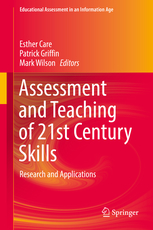If you are looking for the next global education advocate, look no further than Teyise Dlamini from Swaziland. At only 15 years of age, Teyise took the United Nations General Assembly by storm when on November 20th she addressed the High-Level Meeting on the 25th Anniversary of the Convention on the Rights of the Child (CRC).
Her simple yet powerful message, magnified by her radiating smile, captivated leaders and provided important insight on what has to be a central strategy in the next 25 years of the CRC and the quest to educate all children. “Decisions that affect children and young people must start with discussions with children and young people!” said Teyise. It is time to go further. It’s time to give children like Teyise the chance to lead.
Teyise is a self-driven leader. She is an active member of the Girls’ Empowerment Program, a support group for girls who have been subjected to abuse. She is also part of a child-to-child radio program that uses innovative communication models to engage young people on issues of children’s rights and HIV prevention. Teyise credits her success to her mother, who set an example with her determination to succeed and sent her to school. But as Teyise pointed out, she is one of the lucky ones, who has benefited from the investments made by her family, country and the international community to create greater access to education for children from developing countries. Millions more, however, are still not in school. The Millennium Development Goals and the CRC have failed them.
The CRC is the most widely ratified human rights treaty in history. As of September 2014, 194 states have endorsed this agreement. It has inspired change that has led to concrete results for children, including their enshrined right to an education. Between 2000 and 2011, the world cut the number of out-of-school children by almost half, from 102 million to 57 million. Today, the vast majority of out-of-school children and those who are denied many other rights are the most marginalized and often the least visible—orphans, children with disabilities, children living in conflict, in slums, minority children, and children subjected to forced labor, trafficking and other forms of exploitation. These children are also more often girls.
Teyise reminded us, “In many countries, it’s still considered more important to send sons to school. And a waste of time and family resources to send girls to school. Absurd, don’t you think? Educated girls are more likely to delay their first sexual encounter…delay marriage…and earn a higher salary later in life.”
It is absurd that despite the compelling benefits of educating girls, 34 million adolescent (15-19-years-old) girls are still out of school and 1 in 6 are already in some form of union. Almost 10 percent fewer girls under age 17 would become pregnant in sub-Saharan Africa and South and West Asia if all they had primary education. And a staggering 60 percent fewer girls would become pregnant with a secondary education.
Educating girls and boys is not only about averting social and economic problems, it is about giving children and youth the opportunity to be in charge of their own future and contribute to the future of their countries. If given the chance, young people from developing countries can be innovators in addressing their challenges like the youth featured in UNICEF 2014 State of the World’s Children report—Re-Imagining The Future. “There are so many young inventors all across the globe—even in the remotest corners—who are committed to changing the world for children,” says Bisman Deu, a 16-year-old from Chandigarh, India whose invention of a building material made from rice waste is featured in the report.
As we work towards the realization of all rights under the CRC and draw up the post-2015 agenda, we must ensure children and youth are able to participate in the decision-making process, as is their right under the CRC. It is only with the full participation of children and youth that we can build a stronger foundation for protecting all children. We can draw our inspiration from the vision and action of girls like Teyise. “The foundation of that world is safe, healthy, educated children. And empowered girls—registered at birth…enrolled in school…inspired by mentors…and thriving in leadership roles.”
If anyone doubts the power and inspiration of Teyise, all doubt would have evaporated watching a room of full of leaders repeat after her—Bantfwana bangumliba loya embili. It means, “Children are the future” in Swazi. Educated, empowered, engaged boys and girls are the future. Teyise is not waiting for us to show her the path to the future, she is leading us there. And we must catch up with her.









Commentary
Teyise Dlamini Tells the United Nations, Children are the Future
November 26, 2014